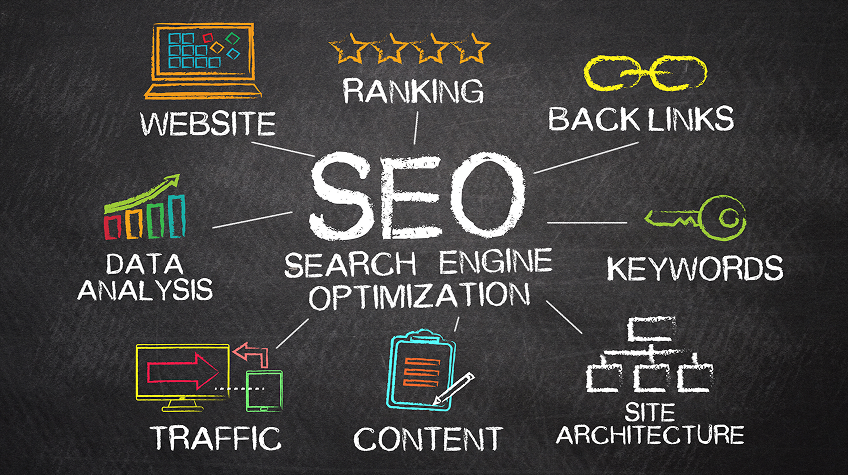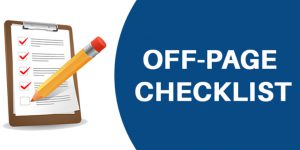
Search engine optimization (SEO) is constantly changing, and keeping up means focusing on what works right now, not just what worked last year.
In Hull, as in any local area, the competition to appear on the first page of search results is only getting tougher. Local cafés, tradespeople, tech development companies, and more are all vying for visibility. If you’re not actively working on your online presence, it’s easy to fall behind. That’s where a solid SEO checklist can be your valuable tool. It keeps you aligned with what matters today and helps cut through the noise of outdated tactics.
The steps outlined below are essential for improving visibility and driving organic traffic in 2026. The goal is practical: to ensure your site is accessible, relevant, fast, and authoritative—all factors that search engines take into account when ranking a business.
Conduct Thorough Keyword Research
Choosing the right keywords is still a core task, but the focus has shifted. It’s no longer about stuffing pages with search terms. Instead, targeting intent-based, long-tail phrases that match what users are genuinely looking for provides better results.
Here’s how to approach keyword research more effectively:
Use trusted tools like Google Keyword Planner, Ahrefs, and SEMrush to uncover search volume, competition, and keyword ideas.
Pay attention to real-life input. Listen to your customers’ questions, check FAQs, and study your competitors’ content.
Explore Google’s autocomplete and related searches for natural, commonly used phrases.
Also, don’t forget to prioritize keywords based on a balance of:
- Search volume: This shows how popular a keyword is—higher numbers mean more people are searching for it.
- Keyword difficulty: A measure of how tough it is to rank for a term. Lower difficulty means it’s easier to compete.
- Local relevance: Focuses on keywords that mention your area or nearby locations to improve online visibility in local search results.
For example, rather than targeting broad terms like “SEO services” or “digital marketing,” choose more specific phrases. Try options like “SEO services in Hull” or “digital marketing agency near me.”
Long-tail, location-specific keywords help attract people who are more likely to convert. That’s because they’re already searching for exactly what you offer—right in your area.
If this sounds overwhelming, consider reaching out to an SEO Hull agency or a trusted local expert. They can help you create a strategy tailored to your business.
Optimize On-Page Elements
After identifying the right and relevant keywords, the next step is to weave them naturally into your website’s content. This is where on-page optimization comes in handy. It ensures that each page on your site is structured in a way that search engines can understand and users find helpful.
Check out these key on-page elements to focus on:
- Title tags: Make each one unique and start with your primary keyword where possible. Keep them under 60 characters so they appear correctly in search results.
- Meta descriptions: While they don’t directly impact rankings, a well-written meta description can improve your click-through rate. Aim for clear, engaging summaries with a maximum of 160 characters.
- Header tags (H1, H2, H3, etc.): These help break up your content and signal its structure to search engines. Use the primary keyword in your H1 tag and related terms in subheadings, but keep it natural.
- Image alt text: Often overlooked, alt text helps with accessibility and reinforces keyword relevance. It’s best to describe the image accurately and include keywords where they truly fit.
Getting your on-page elements right doesn’t require complex tools—it just takes attention to detail and a clear understanding of what search engines (and users) are looking for. Just keep it simple, consistent, and always focused on relevance.
Also Read: Differences: On-Page SEO and Off-Page SEO
Improve Site Speed and Core Web Vitals

A slow website can push potential customers away before the page even loads. Speed has become a stronger ranking signal, especially for mobile searches. Ideally, your site should load in under three seconds to keep visitors engaged and reduce bounce rates.
Google’s Core Web Vitals provide a useful way to measure how well a site performs in terms of user experience. They focus on three main areas:
- Largest Contentful Paint (LCP): Measures how long it takes for the main content to load.
- First Input Delay (FID): Evaluates how quickly your site responds when someone first interacts with it.
- Cumulative Layout Shift (CLS): Tracks unexpected shifts in layout as the page loads, which can frustrate users.
To improve these scores, start with practical fixes: compress large images, remove unnecessary plugins, and enable browser caching. For sites with visitors from multiple regions, using a content delivery network (CDN) can also help distribute content faster and more efficiently.
Also Read: Key Differences Between INP vs FID
Produce Informative and Helpful Content
Content quality plays a central role in achieving more substantial rankings. Pages that provide clear answers, practical insights, or unique perspectives tend to perform better than those written only to target keywords. It’s more about creating content with purpose.
Think beyond basic service descriptions or homepage blurbs. Content can take many forms, such as:
- How-to guides
- Comparisons
- Industry updates
- Practical tips tailored to your target audience
Now the question is: what makes content truly effective for SEO? It should be high-quality, original, accurate, and created with a clear purpose in mind.
Each piece should have a defined goal, either to inform, guide, or help someone make a decision. Content that tries to do too much at once often weakens the overall message.
Clarity is also part of quality. Well-organized text, meaningful headings, and logical flow help both readers and search engines understand the message. If a visitor can quickly scan and find what they need, they’re more likely to stay on the page and engage with it.
Content doesn’t have to be lengthy to be effective. The aim is to meet user expectations and provide valuable information.
Build and Manage Quality Backlinks
Have you checked where your backlinks are coming from and how they affect your rankings? Backlinks remain a strong signal of authority and trust, but quality matters more than quantity. A thoughtful approach to link building helps improve online presence without risking penalties.
Below are key points to keep in mind:
- Focus on relevance and authority: Links from websites in related industries or local communities carry more weight than unrelated sources. A single link from a credible site can be more valuable than many from low-quality pages.
- Earn links through useful content: High-quality guides, case studies, and practical resources often attract organic backlinks when others find them helpful or worth referencing.
- Leverage local connections: Contributing to local blogs, directories, or business associations can strengthen both your backlink profile and local visibility. Participation in events, partnerships, or sponsorships may also result in natural link opportunities.
- Guest post with purpose: Writing for established blogs or local platforms is a way to share knowledge while earning exposure and a relevant backlink. Make sure the content provides genuine value and aligns with the host site’s audience.
- Monitor your existing backlinks: Pay attention to the sources linking to your site. If you notice links coming from low-quality or unrelated websites, it may be a sign of issues that should be resolved. A clean, trustworthy backlink profile supports long-term performance.
- Avoid shortcuts: While buying links or using automated link schemes may offer quick results, they often lead to penalties or ranking drops. Organic, earned links are more sustainable and credible.
Earning and managing backlinks consistently from trustworthy sources helps build authority, reinforce relevance, and support long-term growth in search rankings.
Also Read: Successful Off-Page SEO Checklist 2025
Wrapping Up
SEO strategy doesn’t stay still for long. Algorithms shift, user habits change, and new competitors appear regularly. What remains consistent is the need for a strong foundation—technical health, meaningful content, and trusted links. Businesses that take a structured, ongoing approach to SEO often see more reliable results over time.
Remember, no single fix guarantees a top spot, but consistent effort in the right areas often leads to steady progress and long-term SEO success.






